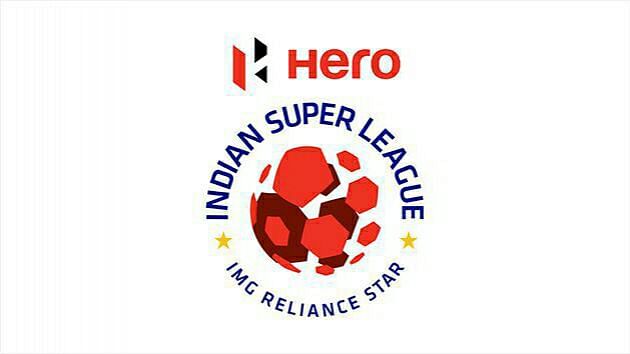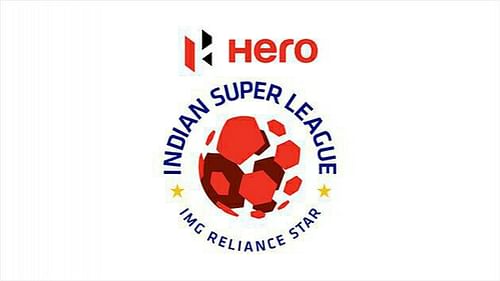
AIFF need to continue development to further the good the ISL brings

The grass is cut, the lines are marked, and the goalposts are in place.
On Sunday, the Indian Super League will kick off following what will surely be an extravagant and colourful opening ceremony that wouldn't seem out of place if it were in a 'Bollywood' film instead. Mumbai City FC will take on the amusingly named Atletico de Kolkata in the opening game at the Salt Lake Stadium.
"Let's Football" bellows the singer on the chorus of the tournament's theme song, and you can safely bet that's what a significant portion of this cricket-obsessed country's population would be doing when the referee blows his whistle at 7 pm.
Talk of the town
In the weeks leading up to the tournament, the hype surrounding it has soared to new heights, not just in India but also in pockets of West, and for valid reasons too.
Of course, you have all these past greats (and Andre Santos) springing out of retirement or obscurity to kick the round leather ball once again. Either that or to exchange shirts with the opposition's traitorous striker at half-time, oblivious to the inconceivable backlash it would cause.
But perhaps of more interest to the passionate fans of the game is if the ISL can establish itself in a country where cricket is, as the cliche goes, a religion and every other sport a mere afterthought.
Maybe it will. I certainly hope so. I think it will be a successful tournament, both financially and sportingly. It will hopefully generate a very healthy revenue for the All India Football Federation too.
A couple more years and the AIFF could be swimming around in a money vault like Uncle Scrooge.
That's where it gets tricky for them though. No doubt they will spend most of that money on improving infrastructure, developing grassroots, and addressing the various other issues holding Indian football back the best they can. But there will be a boardroom meeting around this time debating the expansion of ISL to 10 teams, not unlike what the BCCI did with IPL. After all, success brings with itself an ambition for more.
But it's important for the AIFF to not succumb to any impulse to expand what should realistically be only a short term fix to make some money and boost the profile of football in the country, and not a long term substitute for a more traditional league structure.
A changing landscape
Having spent nearly my entire life in the UAE, I moved to India to pursue higher education a few days before the FIFA World Cup final, and saw something I'd never seen before on any of my annual vacations - kids playing football in my neighbourhood.
Now, it might not seem that big of a deal if you are used to seeing that in your locality, but it was a mind-boggling sight for me. It's been 3 months now since the World Cup ended, but bats and balls are yet to replace footballs on my street.
The ISL will sustain and perhaps even further inflate the football craze that the World Cup has left behind. Those kids will learn, like I once did at their age, that much of football around the world is played at club level. They will familiarize themselves with narratives old and new, right and wrong; Chelsea have no history, Özil is nicking a living, listening to Townsend gives one *insert deadly disease here*, and so on.
More importantly though, they will play even more. Then they will start pestering their parents to allow them to join the football academy that 'just opened a few galis down' (even though it had been there for ages). Tournaments will be contested with more regularity and some of those kids, now in their adolescence, will start considering it as a serious career.
When that happens, and their only opportunity for a well-paid job is in the ISL, many would walk away, like I did, down the road that says 'ENGINEERS' in big, bold letters. Although in my case, it had more to do with me being embarrassingly crap at football.
The priority
So what should the AIFF do instead? What is the long-term plan that should replace the ISL?
The answer is quite simple: a pyramid. No, not like the ones in Egypt, but like the one in England.
In England, and indeed many other countries in the world, there is a league structure (the 'pyramid') that goes from the national first division all the way down to the neighbourhood leagues. To simplify, if you form a football club in England today, and sign up with your local league that's part of the national league pyramid, then you could realistically be playing in the Barclays Premier League in a decade or so, by securing promotions all the way to the top.
There is nothing of that sort in India. There is the I-League with its 14 teams, and the I-League Second Division. Nothing below other than dark, empty space crying out to be filled in. The ISL fails to address that issue. A franchise-based league cannot be elongated into a national league structure.
The IPL at least had world-beating active cricketers, with the faded stars mostly taking on coaching roles. It also inspired similar Twenty20 leagues to be set up around the world, the best of whom then battled in the Champions League T20, further aiding the development of young Indian players.
But the ISL will not spark a similar revolution in football. Sure, similar leagues might pop up in neighbouring countries, and they might all join hands to form their own little tea-party, but you can't help thinking it wouldn't be all that beneficial in achieving AIFF's "Lakshya 2022".
I was in the stands when the Indian team imploded in a 3-0 defeat to UAE in the first leg of a World Cup qualifier in August 2011.
UAE has a league structure, albeit a small one. It's ethnic population is far outnumbered by Indian immigrants, and yet they dominated the game from start to finish.
That's because the UAE Arabian Gulf League, the country's highest football division, is a well-organised league that runs for 8 months, not two; and because the infrastructure and coaching program there is of an enviable class. They can afford that because they have the money to do so.
That should be the AIFF's priority once the funds from ISL start kicking in - to create a proper nationwide league structure, and ensure that the infrastructure at its every level is of a satisfactory standard. It won't be an easy task by any means and may take a number of years to accomplish, but the sooner they start, the sooner the "sleeping giant" will wake up.
The ISL can be a wonderful substitute for the time-being, but if 20 years from today I'm not taking my kids to a FC Jalandhar vs Chandigarh Sporting match in the Punjab First Division League, then it would be an abject failure for the AIFF.
The foundation is here now. It's time to kick on.